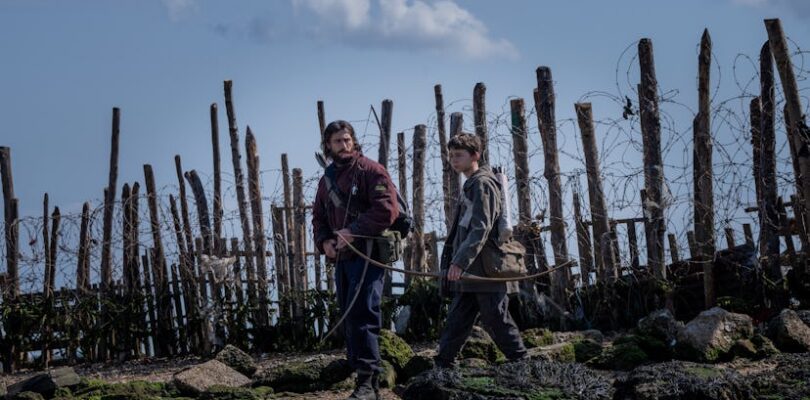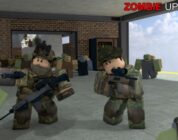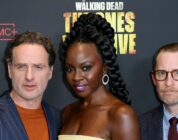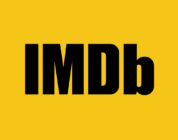Times have drastically changed in the two decades since Danny Boyle and Alex Garland delivered the most gripping apocalyptic horror thriller ever made, and changed the zombie genre forever. When 28 Days Later was released, the zombies had only ever been slow, camcorders were the cutting edge of technology, and the idea of a global pandemic that brought the world’s nations to a halt seemed like something out of science fiction. Now, that science fiction has become reality.
To say the COVID-19 pandemic played a huge part in getting Boyle and Garland back to make the long-awaited sequel 28 Years Later is not an exaggeration. “Obviously one of the things we thought about was about the way that COVID, when it first hit us all and we kind of panicked into the behavior we were told to do… lead us to think [how] we began to get accustomed [to that life],” Boyle tells Inverse.
“Our behavior relaxed and changed,” he continues. “And that made us think of 28 Years.”
“With 28 Years, you would just begin to take more risks, because humans do.”
But never one to rest on his laurels, Boyle wasn’t interested in making a movie like all the other zombie movies that had become so prolific in Hollywood. Boyle is intensely aware of how oversaturated the pop culture landscape has become with zombie movies and shows since 28 Days Later came out, and that inspired him and Garland to take 28 Years Later in a different direction than the previous sequel had set them up for. Instead of spreading to continental Europe, the Rage Virus has been contained to the U.K. mainland, which has remained under quarantine. Survivors have been left to fend for themselves. The world outside has moved on. Boyle was more interested in exploring what an apocalyptic world contained on the British mainland would look like. “Nature finds a way to survive. That felt like a really useful ingredient,” Boyle says.
Influenced by other other movies and TV series where a zombie epidemic spread across the globe, Boyle felt “what we should do is contract back.” This lead to a smaller apocalypse story contained to mainland Britain.
Sony Pictures
That’s what sets 28 Years Later apart from the many other zombie franchises — from The Last of Us to Zombieland to Train to Busan — that have recently captured public imagination: the smaller, contained premise, and the return of the Boyle-Garland dream team. “It’s Garland. Danny Boyle,” star Aaron Taylor-Johnson tells Inverse. Adds co-star Jodie Comer, “It’s the same crew.”
With 28 Years Later Boyle reunites not only with Garland, but with longtime collaborators like cinematographer Anthony Dod Mantle. And with a trusted crew backing him up, Boyle was given the support to make some major swings, both in the creative and technical senses. “Of course with 28 Years, you would just begin to take more risks, because humans do. You just begin to nudge,” Boyle says.
One of the biggest risks that 28 Years Later takes is obvious: the film is shot exclusively on the iPhone 15 Pro Max, an homage to the original film, which was shot on a Canon XL1 digital video camera — a camcorder that was ubiquitous at the time that 28 Days Later was released.
“Camcorders were everywhere, really,” Boyle says. So in deference to the first film’s groundbreaking use of digital photography, he had to use today’s most ubiquitous technology: smartphones. “Now we’re in an age where everyone has this phone in their side pocket,” Comer says. “And so, it was a kind of nice mirroring of how the world’s progressed technically.”
Boyle took advantage of the lightweight cameras to depict a countryside untouched by humans.
Sony Pictures
But Boyle didn’t limit himself to iPhones. The production used “many other lightweight cameras,” from GoPros to drones. “It felt like it gave us the opportunity to move very lightly into the countryside,” Boyle says. That was imperative to Boyle: to reach parts of Northeast England, an area called Northumbria, that has been relatively unchanged for a thousand years.
“It really looked like an area where man has not disturbed. And for our purposes, that’s an area that hasn’t been disturbed for 28 years. So it was lovely to be able to go into that area with lightweight cameras so you don’t create a big heavy footprint,” Boyle says.
“Danny’s just such a bold filmmaker.”
On the other side of things, Boyle and Mantle also constructed elaborate new rigs to shoot the action in ways it’s never been shot before. One rig, which lined up a whopping 20 cameras in a semi-circle, already made headlines in the lead-up to the film. And it provided star Taylor-Johnson with an experience unlike any one he’s had on any other set.
“You think of something of this scale, a big production like this, that it might be shot on film or these certain cameras. But then it’s just Danny going, ‘Yeah, and I’ve got an idea. And it’s going to be iPhones. And sometimes we’re going to put 20 of them on a rig.’ And you’re like, ‘I’m sorry, did I just miss… Did you say it’s going to be a phone?’” Taylor-Johnson says.
The 20-camera rig that Boyle and his crew constructed for the film.
Sony Pictures
The film’s unique mode of filmmaking gave Taylor-Johnson and other cast members a role they’d never had before: camera operator. “There’s a great shot of Aaron Taylor-Johnson running at the end of the film,” Boyle says. “He’s got a camera in his left hand as he’s running at full power. You can’t do that with conventional cameras at all, because the actor has to slow down a bit to let the equipment keep pace with him.”
Rather than feel pressured by the job of operating the camera while acting, Taylor-Johnson was only energized by this new filmmaking mode. “Danny’s just such a bold filmmaker,” he says. “And it laid the sort of groundwork for the fact that this was going to be very experimental and just new. It kept us on our toes in a really refreshing way.”
“[The smartphones] gave us an opportunity to record some of the brutality, some of the violence very graphically, and hopefully startlingly.”
When I ask Boyle about the experience of making 28 Years Later with iPhones, it’s the most animated that the director gets during the interview. Yes, that 20-camera rig was just one of many “unusual rigs” he and his crew manufactured — some would have eight cameras, some 10, though 20 was the limit. And all of these smartphone cameras offered the highest quality, thanks to them coming built in with the ability to shoot in 4K resolution and 60 frames per second. “So you can shoot for a cinema screen without any loss of resolution or satisfaction in watching a widescreen format,” Boyle describes enthusiastically.
The result onscreen is nothing short of breathtaking. The action is more visceral and real than any other recent horror movie has been able to achieve; the bloodshed is so shocking that you can practically feel the arrows ripping through flesh. “[The smartphones] gave us an opportunity to record some of the brutality, some of the violence very graphically, and hopefully startlingly,” Boyle says. There’s no doubt about it: Boyle has handily achieved that goal.





